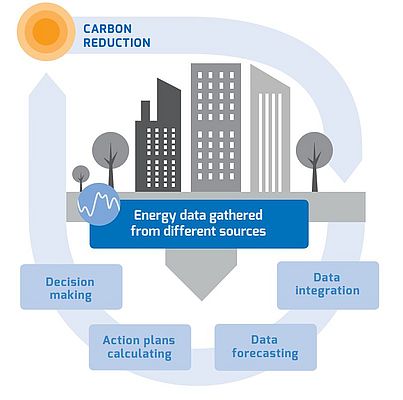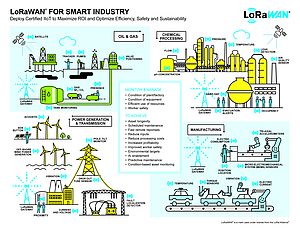It is known that buildings are responsible for 40% of the European Union's (EU) energy consumption and 36% of its CO2 emissions. What is perhaps less known is that by simply monitoring energy use in buildings at least 10% can be saved, without changing the existing infrastructure. Working on this premise, the EU funded FP7 project OPTIMUS brings together a team of researchers and pilot cities to develop an innovative, free and easy-to-use Decision Support System (DSS) to optimise energy use in our public buildings.
The vision
As permanent bodies that plan for the long term, towns and cities are uniquely placed in helping to achieve the EU Climate & Energy objectives and the transition to more sustainable urban environments. The Covenant of Mayors (CoM) initiative illustrates impressively the potential and commitment towards ambitious, local climate action and achieving the EU 2020 targets on reducing greenhouse gas emissions and increasing energy efficiency. The idea behind the OPTIMUS DSS is able to provide a tool with an intuitive interface to produce action plans for building managers to implement.
How it works
COLLECT (Data integration): The OPTIMUS DSS is composed of five modules capturing data from weather monitoring, building sensors, and energy prices, to local renewable energy production and occupant feedback regarding thermal comfort. This data provides experts with a systemic overview of building performance and enables them to identify relationships between the different factors that influence it.
The five data capturing modules are:
- Weather forecasting data is collected to develop accurate energy-demand models and map consumer behaviour related to public buildings.
- Monitoring data is obtained from building monitoring systems (e.g. electricity consumption, indoor temperatures, presence detectors).
- Feedback provided by occupants can help energy managers to adjust thermal comfort parameters
- Energy prices facilitated by local energy providers help to match energy demand with supply and to optimise energy costs
- Renewable energy, produced in buildings is used for self-consumption and/or sold to the energy market to get the maximum benefit from it.
INTERPRET (Data forecasting): The OPTIMUS DSS can forecast the building behaviour based on the integrated energy-related data gathered by the system. Four prediction models have been developed, in order to support the implementation of the OPTIMUS DSS: renewable energy production, energy consumption, indoor temperature, and energy prices. The prediction models are based on multiple linear regression and "grey box" models and are built with historical data obtained from building monitoring systems.
VISUALISE (Setting up action plans): Based on real-time data monitored by the data capturing modules and predicted data produced by the prediction models, the OPTIMUS DSS initially supports the implementation of Action Plans, structured upon inference rules. These Action Plans refer to the energy optimisation in public buildings, examining them not as isolated entities, but within the municipal sector's energy context. Taking into consideration their interaction with energy systems, they can foster efficient management of energy flows at a broader level, integrating energy demand (buildings), energy production and storage sources. 1. Scheduling and management of the occupancy. 2. Scheduling the set-point temperature. 3. Scheduling the ON/OFF of the heating system. 4. Management of the air side economizer. 5. Scheduling the photovoltaic (PV) maintenance. 6. Scheduling the sale/consumption of the electricity produced through the PV system. 7. Scheduling the battery use towards peak shaving and energy cost optimization.
ACT (Decision making): Action Plans are visualised through the front-end environment by the DSS user (e.g. energy manager) who can choose whether to accept and implement the suggested action or not. In this respect, the DSS user can accept the Action Plan and informs the technicians and other responsible staff for the adjustment of the temperature set point or the boosting time of the heating system, the adoption of the appropriate PV maintenance actions, etc.
Testing the tool
The testing period of the OPTIMUS DSS will run until September 2016, assisting the participating pilots' aim to reduce own energy consumption.
Sant Cugat (Sant Cugat Town Hall and Theatre): Construction year: 2007; Floor space: roughly 8.500 m2; Total energy consumption: 2.430 MWh per year; Total CO2 emissions: 903 tnCO2; Energy production: 22 MWh
Zaanstad (Town Hall): Construction year: 2011; Floor space: roughly 18.531 m2; Total energy consumption: 4.435 MWh per year; Total CO2 emissions: 1.573 tnCO2
Savona (Colombo-Pertini School): Construction year: 1957; Floor space: roughly 6.092 m2; Total energy consumption: 625 MWh per year; Energy production: 20 MWh; Total CO2 emissions: 138 tnCO2
Savona Campus: 50.000 m2 of extension; Smart Polygeneration Microgrid (SPM): A 3-phase low voltage (400 V line-to-line) "intelligent" distribution system coupled with a thermal network at the Savona University Campus; Total energy consumption: 2.261 MWh per year; Energy production: 668 MWh - Total CO2 emissions: 723 tnCO2
Launching the OPTIMUS DSS
The OPTIMUS project is offering this tool online, free of charge, together with tailor-made training courses, which are scheduled to take place during spring/summer 2016. These free training sessions are open to energy and facility managers from local authorities. They will focus on the purpose/use of the tool, the benefits and energy savings that can be made.
Prof. Haris Doukas from the National Technical University of Athens (OPTIMUS Coordinator) says "Energy efficiency refurbishment is often not immediately and comprehensively implemented by local authorities due to public budget constraints. The OPTIMUS DSS saves considerable energy and costs through advanced energy monitoring. Furthermore, it can provide locally scaled energy data for public buildings which is important to make a better business case for deep refurbishment.
Taking into consideration that the Energy Performance of Buildings Directive (EPBD) requires renovation works covering at least 3% of public buildings' total floor area with more than 250 m2, and that the Energy Efficiency Directive (EED) obliges energy distributors or retail energy sales companies to save annually 1.5% of their energy sales (by volume) through the implementation of energy efficiency measures among final energy customers, I see the OPTIMUS DSS acting as a kind of facilitator between both interests. In any case, local authorities are now in the position to exploit the EED to achieve its own obligations towards the EPBD and energy targets in their SEAPs."
The OPTIMUS DSS will be launched at the European Conference on Sustainable Cities & Towns, in April 2016, in Bilbao, Spain. Presented as part of a special break-out-session on (energy) Efficient Cities, preliminary findings from the DSS beta version and the training schedule (the first training is due to take place 31 May in Sant Cugat), for those interested in using this energy optimisation tool in their premises, will be shared.






















































